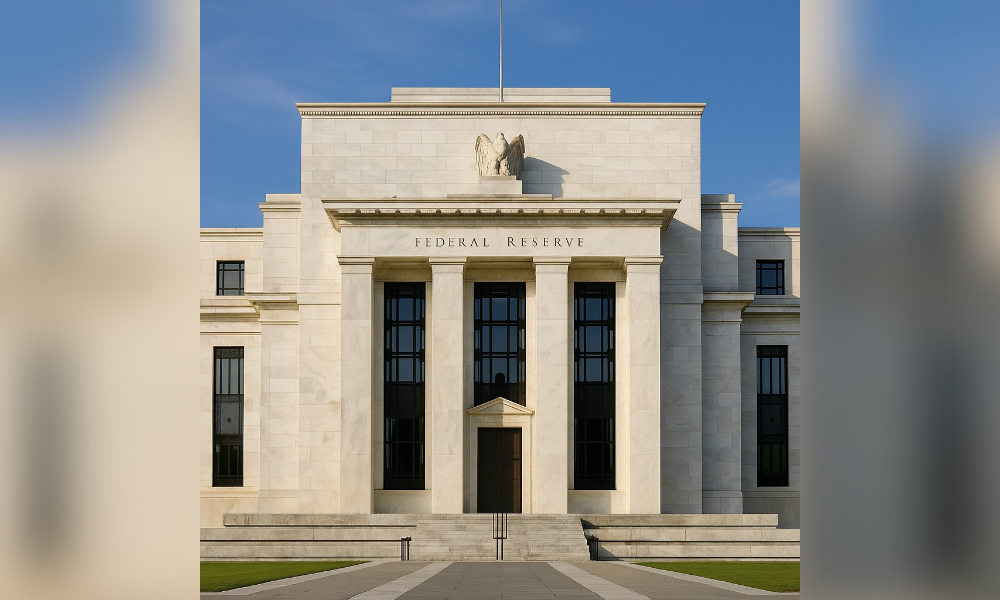Just who is the new face – and what does it mean for mortgages?

President Donald Trump has announced his intention to nominate Stephen Miran—currently the chair of the White House Council of Economic Advisers—for a temporary position on the Federal Reserve Board of Governors, a decision that may shape both near-term monetary policy and the longer-term political contours of central bank governance.
The nomination, which comes just days after the surprise resignation of Fed Governor Adriana Kugler, places Miran in a role that is likely to last only through January 2026. Still, the move has ignited speculation on Wall Street and in Washington about Trump’s broader monetary ambitions, particularly his desire to shift the ideological balance of the Fed ahead of Jerome Powell’s term as chair ending in May.
A Short-Term Nominee With Long-Term Implications
Though Miran’s term would be brief unless reappointed, observers see his placement as more than symbolic. The seat he would fill—vacated earlier than expected by Kugler—may become a critical lever should Trump seek to replace Powell. As the president cannot count on further vacancies during his term, the ability to nominate a successor to the Fed chair may hinge on this single seat.
Miran, a Harvard-trained economist and former Treasury adviser during Trump’s first term, has been sharply critical of the Fed’s direction in recent years. Most notably, he has argued that the central bank’s tolerance for inflation hovering around 3%—above its formal 2% target—represents a failure of institutional discipline.
Last year, on X, he wrote, “The doves are cavalier about inflation and have been the entire time. They think the inflation target should be higher anyway…and that 3% [inflation] is no big deal.” He added that such permissiveness undermines congressional intent and the democratic mandate for stable prices.
Mortgage Market Implications
For mortgage professionals, the potential impact of Miran’s appointment—however fleeting—should not be ignored.
If Miran were to back immediate rate reductions in line with Trump’s policy preferences, short-term borrowing costs, including those linked to adjustable-rate mortgages, could fall. A temporary steepening of the yield curve might also provide marginal relief for long-term mortgage affordability, though any such movement would depend on broader consensus within the Fed’s 12-member voting committee.
Still, Miran’s influence is likely to be constrained by his limited tenure and the institutional inertia of the Fed. Rates are currently on pause after having been lowered to roughly 4.3%, following last year’s peak of 5.3%. Recent inflation readings have come in slightly higher than a year ago, giving doves and hawks alike ammunition for their respective arguments.
A Critic of Fed Orthodoxy
Beyond near-term rate policy, Miran’s views pose more radical questions about the Fed’s structure. In a paper co-authored last year with Daniel Katz—now chief of staff to Treasury Secretary Scott Bessent—Miran proposed reforms that would make the central bank more directly accountable to elected officials.
Among their recommendations: giving the White House authority to dismiss Fed board members at will, imposing a four-year ban on Fed governors joining the executive branch, and requiring congressional appropriation of the Fed’s operating budget.
“To pretend that one can easily shift between highly political and allegedly nonpolitical roles without letting political biases inform policy is, at best, naive—and, at worst, sinister,” they wrote.
Such proposals, if enacted, would mark a sharp departure from the Fed’s traditional independence, a hallmark that markets have long prized. For lenders and mortgage professionals, any erosion in perceived Fed autonomy could increase rate volatility, especially if market participants begin pricing in political rather than economic logic.
Confirmation Path and Political Signals
Whether Miran can be confirmed in time to participate in the Fed’s September 16–17 meeting remains uncertain. Congress is in recess until early next month, and a recess appointment, while possible, could raise political tensions further.
Trump has not yet indicated whether he intends to use the seat to install a long-term successor to Powell or to pivot again in January. But Miran’s nomination underscores Trump’s intention to reshape monetary policy from the top down—even if it begins with a temporary placeholder.
For now, lenders should watch both confirmation developments and Miran’s policy commentary closely. His views on inflation targeting, rate direction, and institutional reform will help shape not just this brief chapter in Fed governance, but potentially the central bank’s trajectory for years to come.



